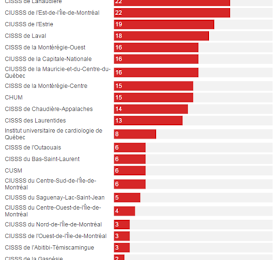Paging through the many posts I receive daily about stem cells, I ran across a story that was published by the Associated Press earlier this week under the headline, “Cells dripped into the brain help man fight a deadly cancer.”
I read these stories because they confirm what we have written dozens and dozens and dozens of times in this space: the action in the area of curing or ameliorating diseases is not in harvesting stem cells from helpless unborn children but drawing on cells from a patient’s own body.
There is a lot in the story by Marilynn Marchione, AP’s Chief Medical writer, that is novel, including that the source that was used to treat 50-year-old Richard Grady is not a stem cell, embryonic or otherwise, but another kind of cell from the patient’s own body.
Here’s her lead about what is called CAR-T cell therapy:
A man with deadly brain cancer that had spread to his spine saw his tumors shrink and, for a time, completely vanish after a novel treatment to help his immune system attack his disease – another first in this promising field.
The type of immunotherapy that 50-year-old Richard Grady received already has helped some people with blood cancers such as leukemia. But the way he was given it is new, and may allow its use not just for brain tumors but also other cancers that can spread, such as breast and lung.
Grady was the first person to get the treatment dripped through a tube into a space in the brain where spinal fluid is made, sending it down the path the cancer traveled to his spine.
As always when dealing with this subject area, I turn to Dr. David Prentice, Research Director, Charlotte Lozier Institute, to explain in layman’s terms what is going on. He told NRL News Today
These early clinical results are quite heartening, and highlight another life-saving cell-based research possibility. Like life-saving adult stem cells (and quite unlike life-destroying, and unsuccessful, embryonic stem cells), the CAR-T cell therapy technique uses the patient’s own cells to effect these cancer remissions.
SUPPORT LIFENEWS! If you like this pro-life article, please help LifeNews.com with a donation!
But note these are not stem cells; they are workhorse immune cells from the patient’s body. The cells are removed from the body and genetically modified in the laboratory. The CAR (Chimeric Antigen Receptor) which is added to the cells, targets the modified immune cells to specifically attack the tumor, and also increases the cells’ activity in attacking the cancer.
I asked Dr. Prentice if he could come up with comparison.
Think of it as giving the cells a tumor-targeting homing mechanism, and then juicing them up on caffeine. Their sole, excited purpose is to kill the cancer. And the results point toward more of these cancer therapies on the horizon.
According to Marchione, Grady was one of the 20,000 people who’ve been diagnosed in the U.S. with glioblastoma, a particularly aggressive brain tumor. The customary treatments, which Grady underwent, are radiation and chemotherapy which did not prevent the cancer from coming back.
He enrolled in a clinical trial at City of Hope and had some of his own blood cells, called T cells, removed and genetically modified in the lab to turn them into specialized soldiers to seek and destroy cancer.
After Grady had more surgery to remove three of his largest tumors, Marchione writes,
He got six weekly infusions of the cells through a tube into his brain, where the biggest one had been. No cancer recurred there, but the remaining tumors continued to grow, new ones appeared, and cancer spread to his spine.
Doctors decided on a bold step: placing a second tube in his brain, into a cavity where spinal fluid is made, and putting the cells there.
“The idea was to have the flow of the spinal fluid carry the T cells to different locations,” along the route the cancer had taken, [Dr. Benjamin] Badie said.
After three treatments, all tumors had shrunk dramatically. After the 10th treatment, “we saw all the tumors disappear,” and Grady was able to cut back on other medicines and return to work, Badie said.
As always, the caveat is this is experimental therapy, moreover tumors have appeared elsewhere for which Grady is getting radiation. But, as Marchione notes,
his response to immunotherapy lasted more than seven months, and “for him to live more than a year and half” after starting it is amazing for a situation where survival often is measured in weeks, Badie said.
Badie, who is neurosurgery chief at City of Hope, a cancer center in Duarte, California, where Grady was treated, added that Grady had “a remarkable response” that opens the door to wider testing.
LifeNews.com Note: Dave Andrusko is the editor of National Right to Life News and an author and editor of several books on abortion topics. This post originally appeared in at National Right to Life News Today —- an online column on pro-life issues.






